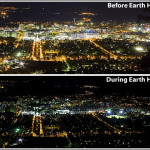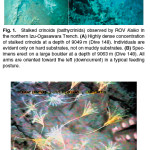
Sixty two moons orbit Saturn. The sixth largest of these at just 300 miles in diameter is Enceladus named after one of the giant children, the Gigantes, of Gaia. The Gigantes came existence when blood of a castrated Uranus fell to the ground. Enceladus, the Greek giant not the moon, was pierced and disabled by Athena’s spear during battle and subsequently buried under Mount Etna in Sicily. The eruptions of Mount Etna are said to be of Enceldaus’s breath.
Like the Greek giant, the moon also erupts. In 2006, a team of researchers reported that the Cassini spacecraft detected eruptions of ice crystals, water vapor, and hydrocarbons near Enceladus’s south pole. Get your mind out of the gutter, I’m discussing Enceladus the moon. But the question remained, did these plumes emerge from a subsurface liquid source or from the decomposition of ice? A new analysis of particles of taken near the plumes by Cassini, indicates that 99% of the particles are salt rich. The salt content implies a salt-water origin and the existence of a large subsurface ocean feeding the plumes. But it may be more complicated than this. A second larger and deeper reservoir may actually feed the shallower one.
Postberg, F., Schmidt, J., Hillier, J., Kempf, S., & Srama, R. (2011). A salt-water reservoir as the source of a compositionally stratified plume on Enceladus Nature DOI: 10.1038/nature10175





